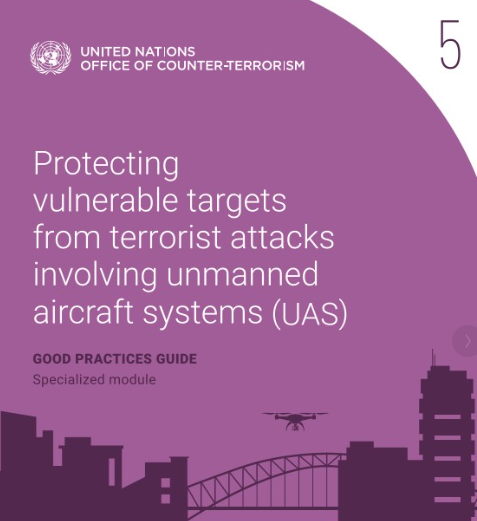Interpol has issued a report and developed course content for first responders to respond to a drone incident based on the Interpol Framework. The course includes items such as: Understanding drones and other associated evidence sources, guidance on safe drone operations (Federal Aviation Administration), crime scene processing sequence, drones’ unique hazards, and processes of investigation.
The Institute for Drone Technology has created formative assessments to sit alongside the Interpol content so learners can ensure the information is retained and they understand the content well.
The latest guidance follows Interpol’s publication of a Counter Uncrewed Aerial Systems (cUAS) report produced jointly with the Norwegian police in 2021. This document is mostly a technical assessment and therefore aims to share the findings of the INTERPOL Drone Incursion Exercise held at the Oslo Gardermoen Airport in Norway in September 2021, with specialized and technical staff from law enforcement agencies involved in countermeasures and protecting critical infrastructures. The Drone Incursion Exercise and the findings of this report represent cooperation between INTERPOL, the Norwegian Police and TEKDIR AS. The report aims to illustrate the preparatory phases, primary challenges, and tangible outcomes from the pre-test and testing phases of the drone incursion exercise to guide INTERPOL member countries in gaining insight and understanding when testing C-UAS technologies and systems. By working with law enforcement in its member countries, INTERPOL aims to ensure that areas of emerging technology and their implications are thoroughly explored, and that international, regional, and local expertise is shared.
The Interpol publication is in response to the threat of drones entering restricted airspaces which has become a cause for concern and a policing challenge in many of the 195 INTERPOL member countries. This threat is aggravated when a drone enters the airspace in and around an airport zone. It can cause an interruption in airport activity, the diversion of flights, and other potential incidents. Aerodrome menaces could result in financial losses to airport owners, airlines, and travellers using the airport due to delays and diverted aircraft, and create safety risks. In this context, counter-drone systems, also called counter-UAS systems (or C-UAS systems), are essential in ensuring the security of airports, and commercial providers have already developed a wide range of solutions to address this challenge. C-UAS systems will likely become even more prominent as authorities in member countries create regulations around drones and managed airspace. Despite this growth in importance, there is still insufficient information on assessing C-UAS systems in real-life conditions.
For more information visit:
https://www.interpol.int/content/download/17737/file/CUAS_Interpol_Low_Final.pdf




